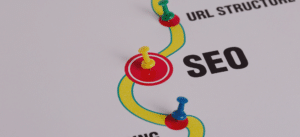
Author: Graham Davidson
Graham Davidson is the Owner and Chief Marketing Guru of Sublyme Digital, leading the agency’s remote-first approach to deliver impactful web design, SEO, and digital growth strategies for businesses across North America.
How Record Internet Speeds Will Transform SEO, Design, and Digital Competition
In June 2025, the digital world witnessed a landmark breakthrough: researchers achieved a record-breaking internet speed of 402 terabits per second—enough bandwidth to download the entire Netflix library in mere seconds (Hackster article). This leap in connectivity is more than a headline; it’s a preview of a future where slow website loads and bandwidth constraints are relics of the past. For decades, web designers and SEO professionals have obsessed over milliseconds, compressing images, deferring scripts, and minimizing code to gain a competitive edge. But as we stand on the threshold of ubiquitous, ultra-fast internet, a fundamental shift is underway. Soon, speed will no longer be a meaningful differentiator. Instead, the battleground for digital success will move to content quality, messaging, and brand experience. This post examines how this seismic change will affect everything from SEO to web design, and how future-focused brands can prepare for a world where every website is lightning fast.
Key Takeaways
- As global internet speeds reach unprecedented heights, website speed will fade as a competitive differentiator.
- The focus of digital strategy will shift to the quality of content, clarity of messaging, and strength of branding.
- Businesses that invest in original, authoritative content and seamless user experiences will thrive.
- Relying solely on technical optimization will no longer be enough to stand out online.
The State of Website Speed Today
The Breakthrough: 402 Terabits per Second!
Historical Perspective
When every website loads in the blink of an eye, what matters most is the story you tell and the experience you deliver. The future of the web belongs to those who invest in substance, not just speed.

The Coming Shift: Speed Becomes Table Stakes
SEO in a Post-Speed World
The New Role of Design: Experience, Navigation, and Brand Identity
Content as the Ultimate Differentiator
How Instant Access Changes Expectations
Action Steps for Designers and Marketers
FAQs:
Answer: As internet speeds increase globally, website speed will become less of a competitive differentiator. While fast load times will remain important for user experience, the focus will shift to content quality, branding, and overall user engagement.
Answer: SEO strategies will evolve to prioritize high-quality, authoritative content and strong branding, as technical speed optimization becomes less critical. Search engines will likely place more emphasis on relevance, expertise, and user satisfaction metrics.
Answer: Businesses should invest in original content, clear messaging, intuitive design, and a memorable brand identity. Providing value and building trust through content and user experience will become the primary ways to stand out online.
Answer: With ultra-fast internet speeds, websites can use larger images, videos, and interactive features without negatively affecting load times. The key will be ensuring these elements enhance the user experience and support the site’s goals.
Answer: To future-proof your website, focus on developing authoritative content, refining your brand’s voice, and delivering a seamless user experience. Staying ahead of design and content trends will help your site remain competitive as technology evolves.
Success Stories
365 Data Centers
Discover how we rapidly rebuilt and optimized a 30-page website for 365 Data Centers, restoring their online presence and managing digital ad campaigns across key regions to drive engagement and growth.
XTECH Football Pads
Discover how we transformed XTECH Football Pads‘ digital presence, boosting their online sales and tripling website traffic through innovative website development and user experience enhancements.
BeEarth Foundation
Discover how we partnered with the BeEarth Foundation to develop a website that aligns with their mission of sustainability and global engagement. Our work has significantly increased their online visibility and engagement, supporting their efforts to promote sustainable development.
We Recycle Solar
Learn how we illuminated digital success for We Recycle Solar by completely redesigning their website to reflect their leadership in the growing solar recycling industry and implementing strategic digital advertising campaigns that enhanced their visibility at key industry events.
Preferred Home Health Care & Nursing Services
Explore how we elevated the digital presence of Preferred Home Health Care & Nursing Services by enhancing their website for better lead generation, building a dedicated site for staff recognition, and optimizing SEO for their location pages.
What Our Clients Say: Elevating Online Success
We Build Cool
Final Thoughts
Let's Build Something Sublyme
Ready to lead in the age of Holistic Search-Optimization (HSO)?
Is your website ready for the future of instant access? Contact Sublyme Digital today to discover how we can help you craft content, design, and digital strategies that set you apart—no matter how fast the web becomes.



